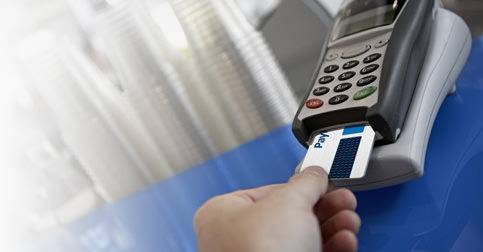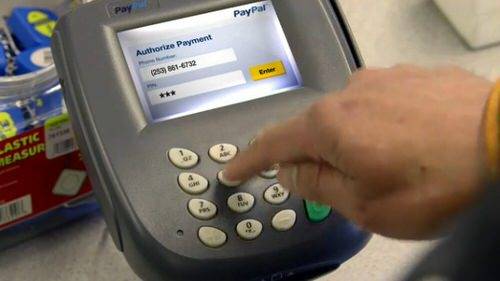
PayPal has stopped promoting its Payment Card to consumers and erased most references to it from its website, and may soon discontinue it.
The card, a magnetic-stripe plastic card similar to credit and debit cards in appearance but linked to a PayPal account, will still be honored by merchants who accept it, according to a company spokesperson.
“If a customer chooses to use a PayPal payment card, they can easily request one through the PayPal.com site, or contact customer service,” PayPal’s Chris Morse told us. That’s sort of true—but they’d have to know that the card exists, and click through five screens to find the setting in which they can request a card. (There’s no charge for the card, which takes 7-10 days to arrive by mail.)
It’s not clear how much longer the card will remain available. Morse said that PayPal was focused on products which save consumers time and money. To us, it’s not clear how a plastic card fits that bill: It’s at most a convenience.
The company is now clearly emphasizing its mobile app as the way to pay in stores.
Plastic Or App?
In this move, the company appears to be trading ubiquity for simplicity, slimming down its confusing array of payment products. In recent speeches, including our ReadWriteMix interview with PayPal president David Marcus in January, executives have emphasized PayPal’s mobile app as the primary way they hope consumers will use their PayPal account to pay for purchases in retail stores.
PayPal first introduced the Payment Card in October 2011, and inked a deal with Discover Financial Services in 2012 to get it accepted in more stores. The company touted the plastic card as an option for payment at Home Depot stores. And it signed up partners like Global Payments to get the card accepted at more stores, emphasizing the idea that it would work with a familiar swipe.

Consumers didn’t seem to bite, though. Don Kingsborough, PayPal’s vice president of global retail, told me in 2012 that most consumers preferred to pay using their mobile-phone number and a PIN instead of the Payment Card.
Since then, smartphone adoption has soared, and PayPal has emphasized uses like ordering ahead and picking up at a store instead of ringing up a shopping cart full of purchases in a checkout line.
With PayPal deemphasizing the card, other players may bid for consumers looking to hold onto the convenience of swiping plastic. Google first cancelled plans for a plastic Google Wallet card last year, then revived it in November. There’s also Coin, a startup which offers a physical card linked to multiple credit- and debit-card accounts. It offers the additional security feature of deactivating and notifying users when they walk away from their card. Still, PayPal’s decision suggests that another plastic card may simply not offer enough benefits over the existing cards in consumers’ wallets.
So Many Cards, So Little Time
The Payment Card product also likely suffered from confusion with not one, not two, but three other plastic-card products PayPal offers its customers. There’s a PayPal Business Debit Card, primarily used by small-business owners to spend money in their PayPal accounts. And then there’s a PayPal Prepaid MasterCard, which is a conventional prepaid card which you can load from your PayPal account but which can’t tap your PayPal account directly for spending. And then there’s a PayPal Extras MasterCard, a conventional cobranded credit card issued by GE Capital which has little to do with PayPal besides the name.
None of those cards, legacies of PayPal’s meandering product direction over the years, help PayPal communicate how you can spend with your PayPal account, linked to various bank-account and credit-card funding sources, in retail stores. In fact, they muddy the waters.
If PayPal’s Marcus decides he wants to cut up more plastic cards, he has lots of scissoring to do. And he’s indicated a willingness to trim down PayPal’s product portfolio.
See also: How PayPal’s App Update Could Reinvent The Company
The company has never said how many Payment Cards it issued to consumers. And while PayPal didn’t directly address why it stop promoting the card, the timing is understandable. For one thing, plastic cards are less trusted in the wake of last year’s Target hack, so whatever comfort consumers might have derived from a physical payment vehicle has likely dissipated. And PayPal would have to figure out how to upgrade the card to the new chip-and-PIN standard by next year, which likely would have required considerable engineering.
PayPal still has multiple options for in-store payments, including Payment Code, a combination of a scannable code and a one-time-use four-digit number that PayPal customers can use at some retail locations. It’s reasonable to think that the company will push that in place of plastic.









